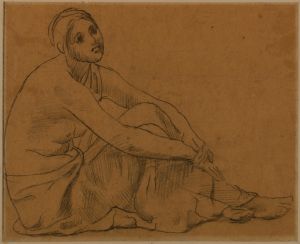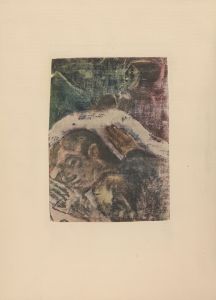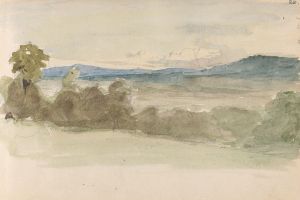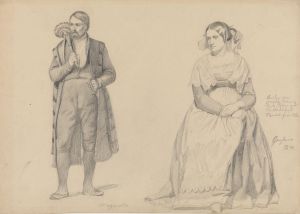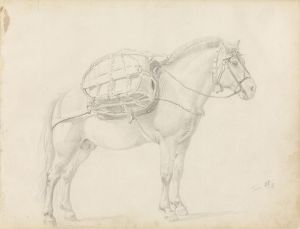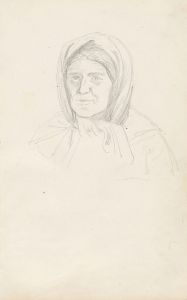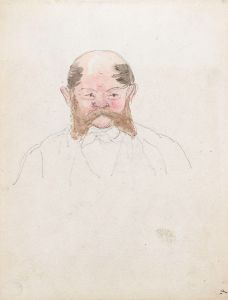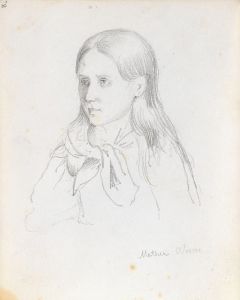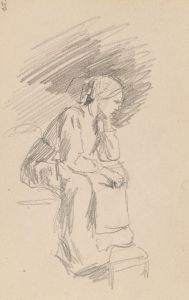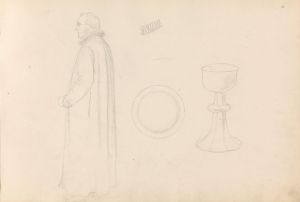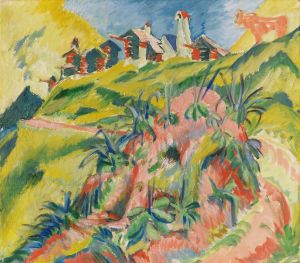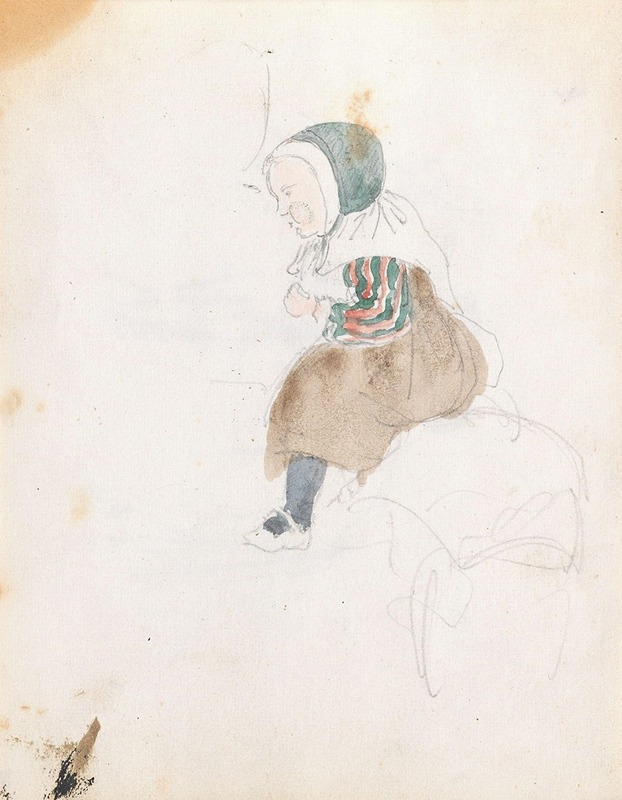
Sittende barn
A hand-painted replica of Adolph Tidemand’s masterpiece Sittende barn, meticulously crafted by professional artists to capture the true essence of the original. Each piece is created with museum-quality canvas and rare mineral pigments, carefully painted by experienced artists with delicate brushstrokes and rich, layered colors to perfectly recreate the texture of the original artwork. Unlike machine-printed reproductions, this hand-painted version brings the painting to life, infused with the artist’s emotions and skill in every stroke. Whether for personal collection or home decoration, it instantly elevates the artistic atmosphere of any space.
Adolph Tidemand was a prominent Norwegian painter known for his detailed and realistic depictions of Norwegian rural life and folk culture during the 19th century. One of his works, "Sittende barn" (translated as "Sitting Child"), exemplifies his focus on capturing the essence of everyday life in Norway during this period. While there is limited specific information available about this particular painting, it is useful to understand Tidemand's broader artistic context and style to appreciate the significance of his work.
Adolph Tidemand was born on August 14, 1814, in Mandal, Norway. He studied art in Copenhagen and later at the Academy of Fine Arts in Düsseldorf, Germany, which was a major center for art education at the time. The Düsseldorf School of painting, known for its detailed and realistic style, greatly influenced Tidemand's approach to art. He became one of the leading figures in this movement, which emphasized genre scenes and historical subjects.
Tidemand's work is characterized by its attention to detail and its ability to convey the cultural and social aspects of Norwegian life. He often depicted scenes from rural Norway, focusing on the customs, costumes, and daily activities of its people. His paintings are noted for their ethnographic accuracy and have been valuable in preserving the visual history of 19th-century Norway.
"Sittende barn" fits within this tradition, likely portraying a child in a moment of contemplation or rest. While specific details about the painting's composition and the identity of the child are not widely documented, it can be inferred that Tidemand's intent was to capture a slice of life that reflects the innocence and simplicity of childhood in a rural Norwegian setting. His ability to depict such scenes with empathy and precision made his work resonate with audiences both in Norway and abroad.
Tidemand's paintings often carry a narrative quality, inviting viewers to ponder the stories behind the faces and scenes he depicted. His works were not only appreciated for their artistic merit but also for their cultural significance, as they provided a window into the lives of ordinary Norwegians during a time of significant social and economic change.
Throughout his career, Tidemand received numerous accolades and his works were exhibited widely. He was a key figure in the Norwegian romantic nationalism movement, which sought to promote national identity through art and culture. His paintings, including works like "Sittende barn," played a crucial role in shaping the visual representation of Norwegian heritage.
In summary, while specific information about "Sittende barn" is limited, understanding Adolph Tidemand's broader body of work and his impact on Norwegian art provides valuable context. His dedication to portraying the everyday lives of Norwegians with authenticity and care has left a lasting legacy, making his paintings important cultural artifacts that continue to be studied and appreciated today.






